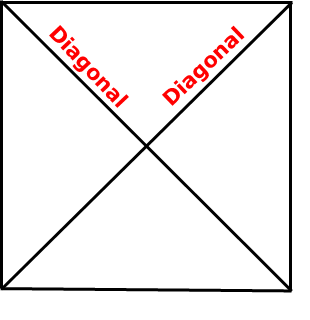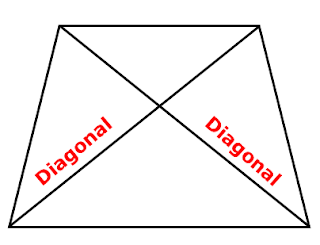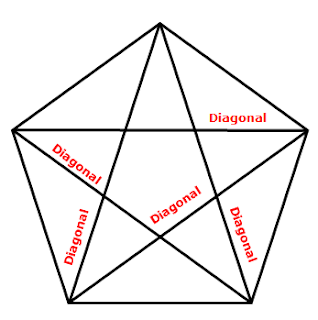Definition & Diagonals of Polygon’s
Diagonals of Polygon’s
In geometry, a line segment joining two vertices of a polygon or polyhedron, when those vertices are not adjacent is known as Diagonal.
Diagonals of Polygon’s
A polygon’s diagonal’s are line segments, that joining from one corner to another corner.
Formula for number of diagonals = n(n-3)/2
where n is number of sides or vertices in a polygon.
Any quadrilateral has 4(4-3)/2 = 4 x 1/2 = 2 diagonals.
A rectangle has 4(4-3)/2 = 4 x 1/2 = 2 diagonals.
Rectangle

A square has 4(4-3)/2 = 4 x 1/2 = 2 diagonals.
square

A parallelogram has 4(4-3)/2 = 4 x 1/2 = 2 diagonals.
Parallelogram

A trapezium has 4(4-3)/2 = 4 x 1/2 = 2 diagonals.
Trapezium

A pentagon has 5(5-3)/2 = 5 x 2/2 = 5 diagonals.
Pentagon

A hexagon has 6(6-3)/2 = 6 x 3/2 = 9 diagonals.
A octagon has 8(8-3)/2 = 8 x 5/2 = 20 diagonals.
A triangle has 3(3-3)/2 = 3 x 0/2 = 0 diagonals.
